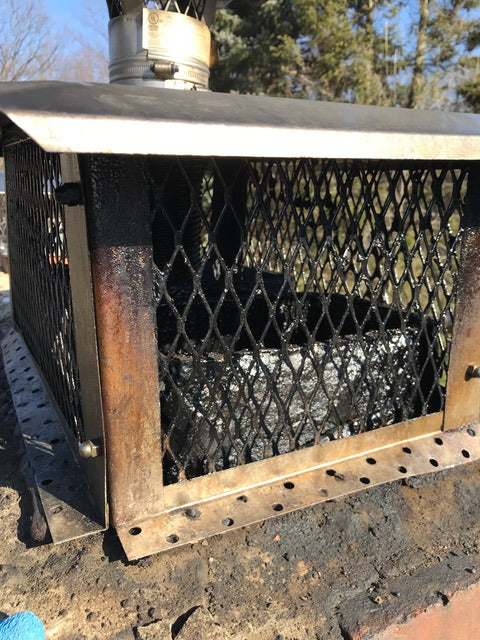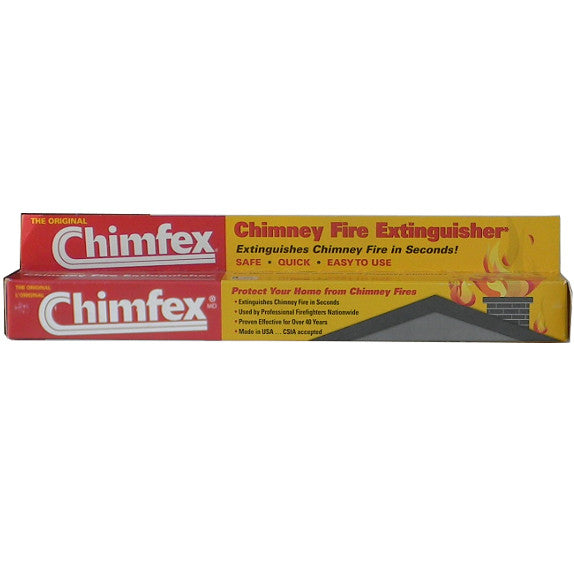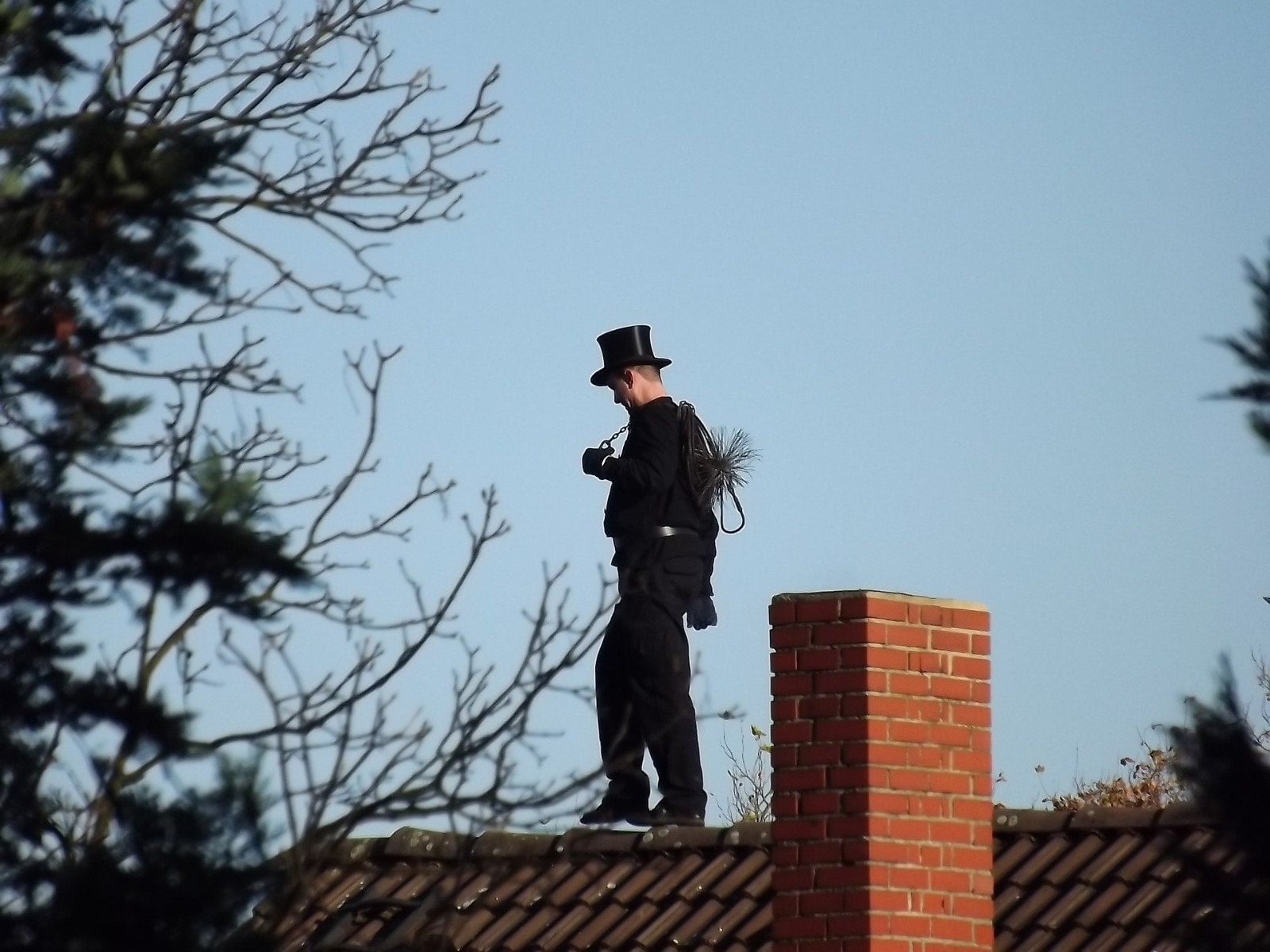What is Creosote & How Can You Avoid Creosote In Your Chimney
July 19, 2023

What is Creosote?
Creosote is the byproduct of incomplete combustion when wood is burned. When the smoke from a fireplace or a wood stove leaves the firebox, it often condenses in the chimney or the connector pipe. The particles and organic compounds of the unburned fuel are carried into the chimney in smoke form, this becomes the makeup of creosote when the flue gas condenses.
Creosote is a flammable substance which can burn at extremely high temperatures and is also a carcinogenic (potentially cancer causing) material in the unburned state. It must be handled with care when removing.
Stages of Creosote
Totally preventing creosote buildup in your chimney is unavoidable when burning wood. There are three stages of creosote and it is important to identify the level of creosote you have and remove it before it becomes too dangerous.
Stage 1 Creosote
Stage one creosote is unavoidable. You will see it even if you are burning your stove or fireplace correctly with good hot fires and dry wood. Stage one creosote is a dust like soot coating on the wall of the chimney. This stage is not dangerous. However, it is very important to remove the creosote to prevent restrictions in the flue pipe.
Stage 2 Creosote
Stage two creosote is much more concerning. Stage two creosote looks like chunky tar flakes. This stage will restrict the flue pipe and can cause a wood stove or fireplace to smoke. Stage two creosote will be much harder to remove and you will need a much stiffer bristle brush and other tools to possibly scrape the creosote from the inside of the chimney walls.
Stage 3 Creosote
Stage three creosote should be dealt with right away. Stage three creosote will appear as a thick tar like coating on the inside of the chimney walls. This stage is very dangerous because the creosote can catch fire at lower temperatures. Chemical treatment or special rotary chain whips are often required to remove stage three creosote. Clean your chimney often to prevent stage three and to avoid costly removal.
How Can You Avoid Creosote Buildup in Your Chimney?
Only burn seasoned firewood
While you cannot completely avoid creosote when burning wood, you can significantly reduce the amount and the stage of creosote by burning dry wood. Creosote is the byproduct of incomplete combustion of the wood. The less moisture in the wood the hotter the firebox will get, which will allow the wood to reach maximum combustion. This prevents the particles in the creosote from condensing inside the chimney because they are burnt off in the firebox. The moisture content of the wood should be around 15 to 20 percent moisture content. You can use a digital moisture meter to check and monitor the moisture content of the wood.
Make sure the fire gets enough oxygen
Another key component for reaching maximum combustion of the wood is to make sure the fire has the proper amount of fresh air feeding it. Installing a fresh air intake is the best way to ensure the stove is being constantly fed with fresh air. This will help the draft of the stove and ensure the fire is burning hot. A lazy fire and soot buildup on the glass of the wood stove are signs that the fresh air levels have dropped and the fire is not burning hot enough to prevent the particles in the smoke from burning before reaching the chimney.
Reduce condensation
The best way to reduce condensation on the chimney is to burn much hotter fires to prevent the particles from reaching the chimney. Installing a chimney liner is the best way to keep the flue gasses hotter inside the chimney to prevent excess condensation. However, preventing the gas from carrying the heavy creosote particles up the chimney is the best defense for condensing flue gases.
Do not allow the fire to smolder
The New EPA rated stoves are made to have longer burn times smolder to a degree. The new technology allows the fire box to maintain a high temperature. The secondary burn and catalytic combustion stoves are made to have extremely long burn times without sending the creosote particles up the chimney.
Older stoves without a built-in damper or air control are prone to create much more creosote than the newer stoves. It is important to have a hotter fire in an old stove to ensure the creosote particles burn inside the firebox. You will have to burn more wood to keep the firebox temperatures hot. Letting the wood smolder in an old stove will most likely lead to stage two creosote or worse.
Will Any Products Help with Creosote Buildup?
As reviewed, the best way to prevent creosote buildup is to burn the wood more effectively, allowing it to burn off the heavy creosote particles in the smoke. Updating your wood stove will be your best option if you are still burning with an outdated non EPA wood stove. Napoleon, Osburn and Timberwolf wood stoves offer long burn times and produce low amounts of creosote.

If you are producing stage 2 and 3 creosote you can use Chimney Saver Cre-Away or Anti Creo-Soot to modify the creosote to help make it easier to clean out the soot. Cre-Away gets applied to the chimney flue and sticks to the creosote, drying it to a point where you can clean the stubborn creosote off the chimney walls. Anti Creo-Soot is a nontoxic, noncorrosive and nonflammable water based catalytic formula that is safe for wood stoves. This can be used daily to help control the amount of creosote that is formed. This can also be used to help remove stubborn stage 2 and 3 creosote.
If you plan on installing a new stainless steel chimney liner for a wood stove, make sure to insulate the chimney liner using a chimney liner insulation blanket kit. This is going to keep the flue temperature hot and prevent excess condensation inside the flue. The insulation will also ensure the safety of the chimney.
If you do not have a stove top thermometer, you should get one immediately. Running a wood stove without a stove top or stove pipe thermometer is like driving a car without a speedometer. The thermometer will tell you if your stove is running hot enough to burn off the heavy creosote particles, preventing them from ever reaching the chimney connector. You can also use a stove pipe probe thermometer to accurately monitor the stove pipe temperature.
DIY Center
(AKA ‘The Rockford Files’)
From video tutorials to product walkthroughs, we have a variety of DIY resources just for you! Click the button below to view our entire library.







